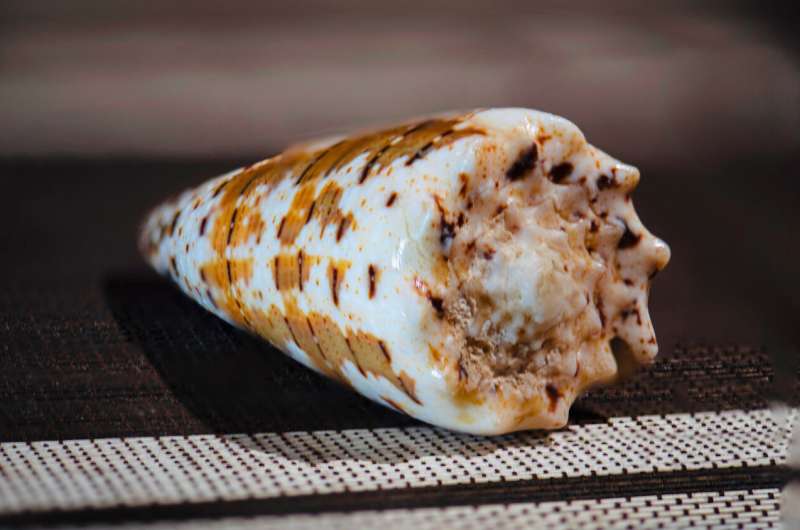March 15, 2021 report
Study of venom in imperial cone snails suggests they use fake pheromones to entice prey

An international team of researchers has found that imperial cone snails produce two compounds that mimic chemicals found in pheromones produced by Platynereis dumerilii—a type of worm preyed upon by imperial cone snails. In their paper published in the journal Science Advances, the group describes their study of snail venom and what they learned about it.
Prior research has shown that imperial cone snails produce venom as a means for disabling prey—they inject it using a harpoon-shaped radula. Prior research has focused on the peptides in the venom produced by the snails, but as the researchers with this new effort note, very little is known about the small molecules that make the venom so effective. In this new effort, the researchers focused their attention on the glands of the snails that produce the venom. Notably, imperial cone snails are known to prey on worms rather than fish.
As part of their effort, the researchers worked to isolate the small molecules in the venom as a means for characterizing them. In so doing, they found two compounds, genuanine, and conazolium A. Both notably mimic the type of urate and ovothiol A found in pheromones produced by Platynereis dumerilii worms. Prior research has shown that such pheromones play a role in the mating rituals of the worms.
The researchers suggest that the imperial cone snails produce the two fake pheromones as a means to lure the Platynereis dumerilii snails out of the crevasses or tubes where they hide. They say the next step in their research is to attempt to verify that the snails really do use the chemicals as a form of enticement for prey. They note that using stable mimics instead of the same pheromones used by their prey is a new twist on chemical ecology.
The researchers also discovered that imperial cone snails that live in shallow waters did not produce conazolium A, which, they note, suggests that they are a different species than imperial cone snails that live in deep water. Further study showed that the species living in shallow water instead produced venom containing neurotransmitters like those typically found in serotonin. This finding suggests they use a much different strategy for disabling prey.
More information: Joshua P. Torres et al. Small-molecule mimicry hunting strategy in the imperial cone snail, Conus imperialis, Science Advances (2021). DOI: 10.1126/sciadv.abf2704
Journal information: Science Advances
© 2021 Science X Network





















